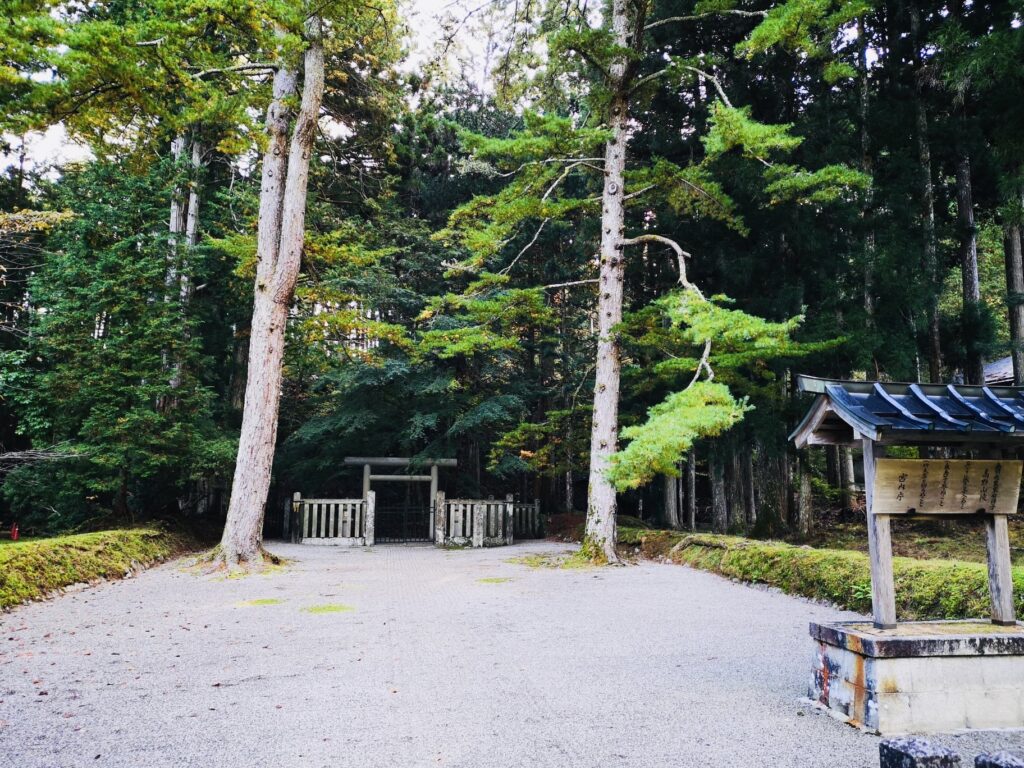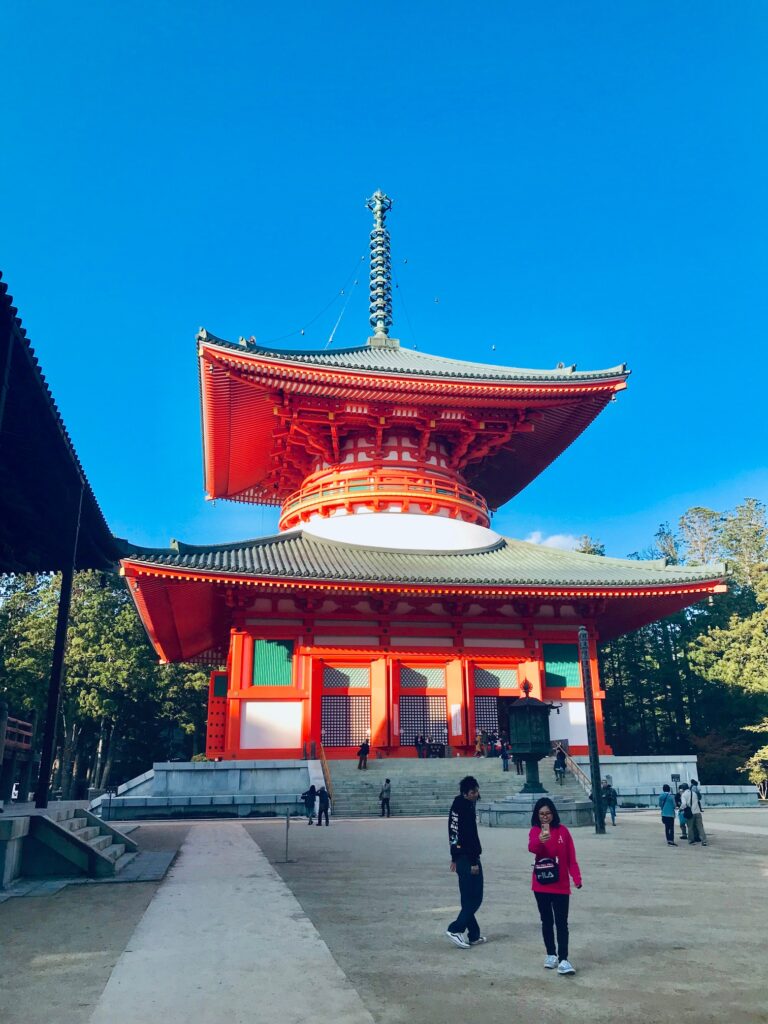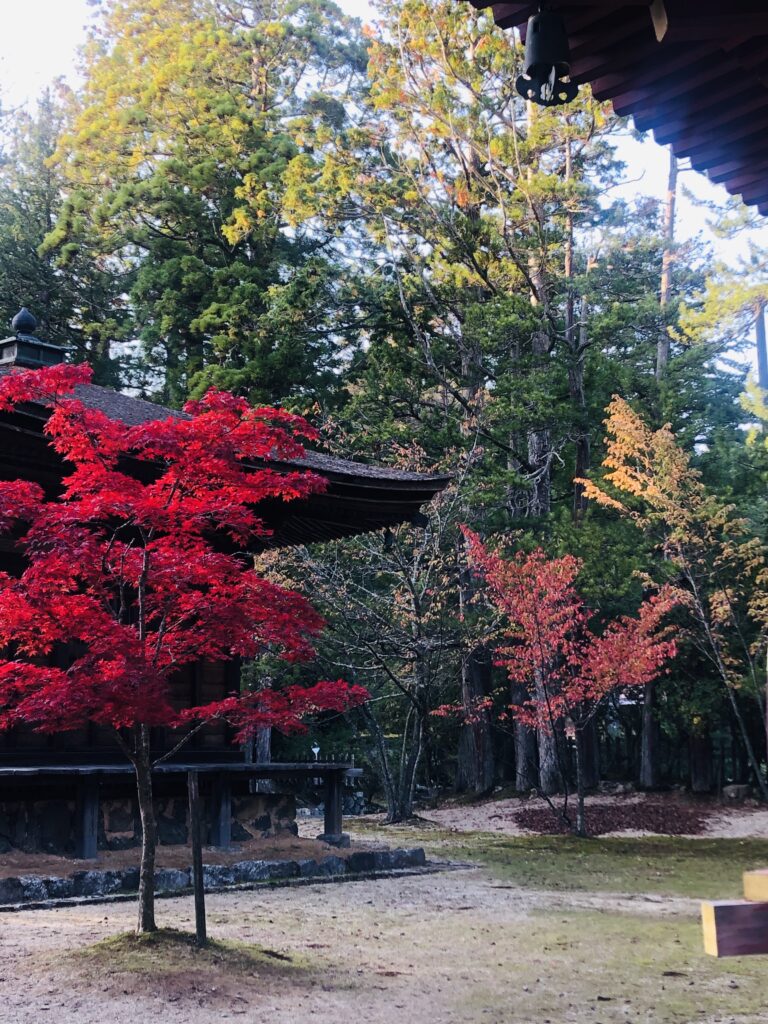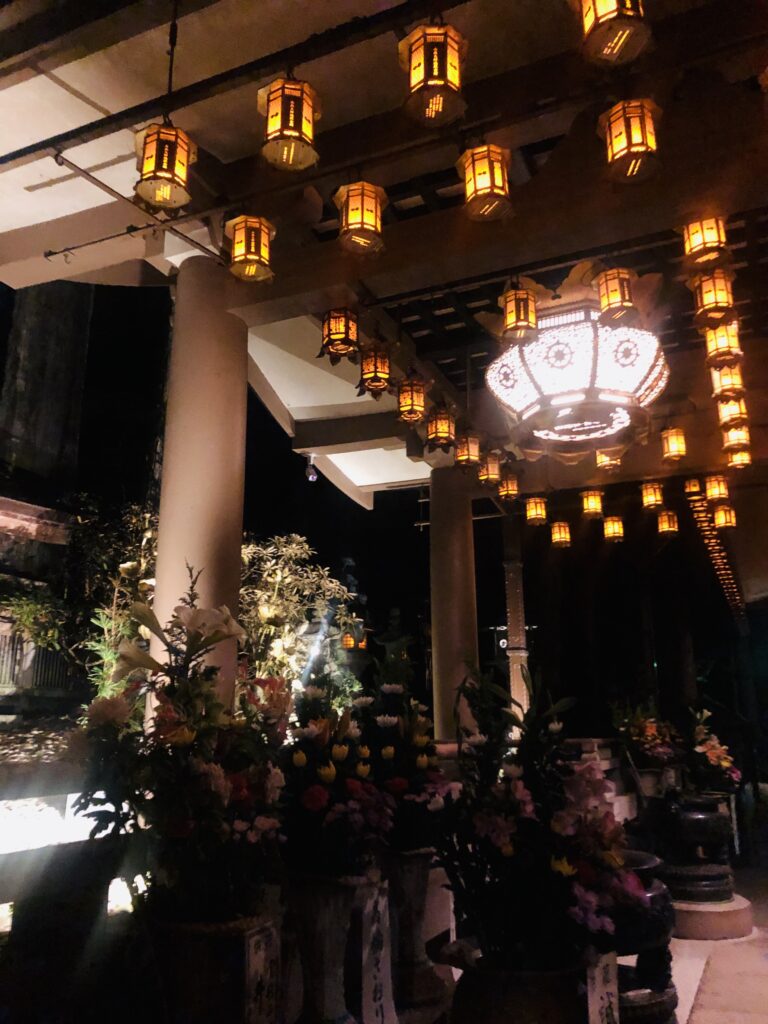From Nara we traveled to the port city of Osaka, initiating a multistage journey by train, funicular, and bus into the forested mountains of Kōya, headquarters of Shingon, one of Japan’s esoteric Buddhist sects. Upon arrival, Kris noted that Kōyasan (Mt. Kōya) is many different places at once, among them pilgrimage and tourist site, temple network, sacred landscape, and necropolis.

The air clear and cool, we arrived at our lodging, Fudōin, one of the many temples that today offer accommodation to the public. We noted the torii gate and rock landscape marking the tomb of a twelfth-century empress consort patron, evidence of this subtemple’s own textured history.

Once settled in, we headed to the Reihōkan, Koyasan’s primary space for public exhibitions. Gathering around wooden sculpture, dual-world mandalas, an annotated pictorial inventory, and a set of miniature wooden pagodas, we discussed and debated sculptural naturalism, gilding techniques, the relationship between visualization and visuality, the production of multiples, and iconography on the move from Central Asia to Japan.

Crossing Kōyasan’s primary east-west road, we entered the central temple precinct, pausing to “turn the wheel of dharma” by pushing, carousel-style, a rotating sutra repository. Congregating before a much larger pagoda, the Konpon Daitō, resplendent in vermillion, red, and white, we discussed its complex synthesis of rounded and square architectural idioms.

After a refined vegetarian banquet back at Fudōin (and a very special birthday celebration), the less jetlagged among us took a nighttime walk through the mountain’s sprawling, densely layered graveyard. The route ends at the Okuonin, the mausoleum of Kōyasan’s own founder, Kūkai (744–835), where he is believed to sit in meditative concentration, now a perpetually hidden and quasi-animate Buddhist icon.
